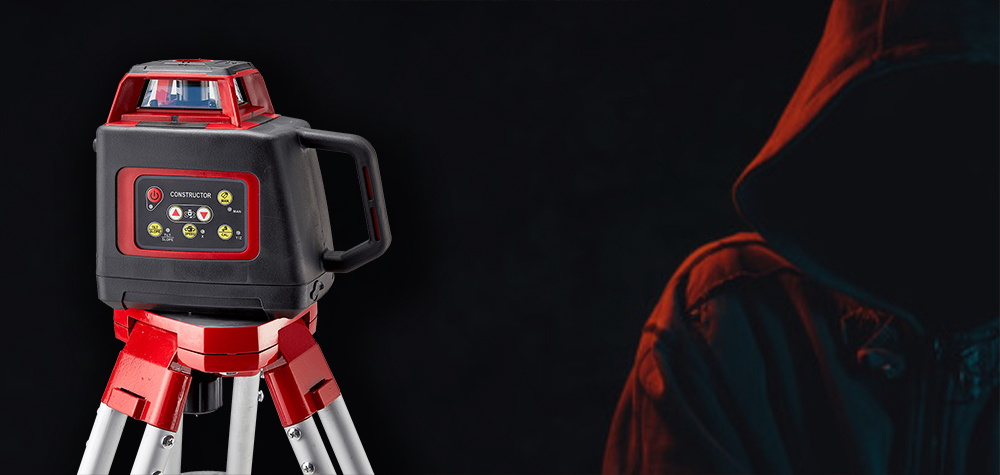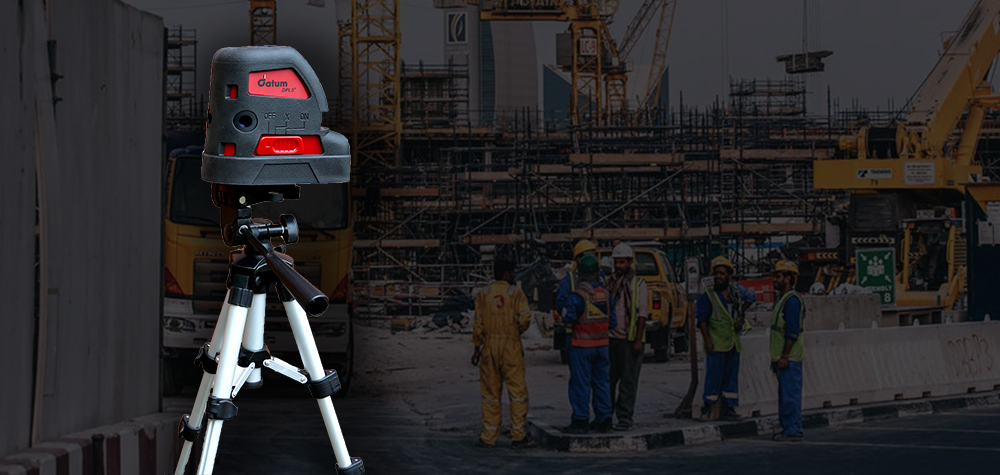In recent times, the construction industry has seen a rise in survey equipment theft. Don’t let thieves take vital instruments, stop them in their tracks with our top tips for theft prevention.
1. Always observe your surroundings.
How many times have you locked away your equipment without so much of a second glance around? Sometimes, all you can think about is finishing a hard day’s work and heading home - this may prove detrimental to your finances. Familiarity breeds complacency - after many days on the job without any signs of potential theft, it becomes easy to overlook suspicious signs.
Pay attention.
Who is observing you, or van or your premises? Have you seen them before?
Even on site, in a public area in broad daylight, the chances of theft are still high. Vehicles and bikes have been known to drive past and snatch instruments, so ensure that you’re ever-vigilant with your situational awareness and be careful where you set-up your equipment - is it easily accessible for theft? Be ready to make a note of vehicle registrations and person descriptions, keeping a close eye on your surroundings could make a key difference on whether or not you become the victim of a thief!

2. Never leave your equipment unsupervised.
It happens. You’re all set-up, ready to get on with the project. Then you realise that you’ve left the measuring staff in the van. What do you do? This pivotal decision can be faced by anybody in the industry, from new surveyors to adept experts. But how you respond to this decision will determine what impact will be made on your project. If you consider that, “It will only take a minute, my instruments will be fine,” then the impact can and will cost you. Thieves only need a minute to act. There is only one choice to consider:
Never leave your equipment unsupervised.
Take your instrument with you, or ensure a colleague keeps it under close observation. It is imperative that your equipment is supervised at all times. If possible, park near your work-site if you need constant access to the vehicle. It’s a simple preventative, but an incredibly important one.
3. Keep a record of your equipment
When you begin expanding your toolkit, there’s a chance that you might lose track of your equipment. Profits are in the green, projects are on the go and you’ve invested in more equipment to meet the demand.
Log everything.
Take photos, clearly describe the instrument and accessories, note down the make, model and serial numbers. Should anything go missing, you will know right away and act fast before it’s gone forever. Even if you only have one instrument, it’s worth logging down the details - easy identification will aid the police in their investigation and save you precious time for locating your missing instrument.
4. Inform and educate others on the unique and costly equipment
Specialist survey equipment can be expensive and it takes time to build up the unique kit needed for construction projects. When those around you don’t consider how much an instrument is worth, their care around it can become lax. Equipment that needs to be recovered might remain missing owing to a slow response from the authorities and co-workers.
Ensure everybody knows the value of your equipment and reacts accordingly - the worth may seem obvious to some, but to those that are new to the industry, the extra knowledge could mean the difference between a loss and a gain.

5. Implement a locking device
Always use a locking device on your instruments not only to secure your instruments, but to also deter thieves from attempting a theft in the first place. There are many different types of locking devices on the market as an extra security measure, but ensure you invest in a quality one. It’s much cheaper to buy a quality Bradlock than it is to buy a completely new instrument.
Again, it’s easy to get complacent when it comes to locking up your instruments. A locking device can be used on equipment in vehicles too, so it is important to never forget to lock them up - and double check your vehicle or storage area is locked too.
6. Secure your equipment
Create more obstacles for your would-be assailant! There are never too many steps involved with security, increase the safety of your equipment just by taking that little bit of extra time ensure it is always protected. Secure your equipment on site by fixing it to a structure or using a locking device. When the job is done, that’s when your equipment is most at risk.
Keep your equipment in a standalone storage unit on your premises.
This has to be secured to the highest measure. Chains aren’t enough as thieves will utilise bolt cutters, consider investing in deadlocks or key coded entry systems. A shed can be easily damaged and broken into, ensure the walls of your storage unit is robust and resistant to attack.
If possible, install CCTV for the ultimate safety system. Not only does this act as a prevention for criminal activity, it also helps for easy identification of the suspect should your equipment be stolen.
7. Report to seller or manufacturer
Chances are, sellers or manufacturers place tracking or automated remote locking systems on to new instruments purchased - just give them the serial number from your instrument. It will become flagged on their database, which in turn makes your equipment harder to sell on and invalid for servicing.
Reporting it stolen to a seller or manufacturer may not compensate you for the replacement equipment and wasted hours of labour, but if it becomes common practice for all those targeted by criminals, this emerging theft problem within the industry will decrease as it will no longer prove profitable for thieves. The benefits will not outweigh the costs and deter their motives.
8. Fit GPS trackers to all of your equipment
GPS trackers might just become any surveyor’s knight in shining armour. Fitted internally to a wiring system, a GPS tracker is the best way to pinpoint the exact location of your equipment for recovery. GPS is usually pre-installed on newer models, however, it may prove difficult to retrofit to older models. Nevertheless, it can be done as long as there is a wiring system it can connect to.
Your equipment could be recovered in a mere few hours with a GPS tacking system, so it is definitely worth investing in this revolutionary technology.
9. Use alarms as a deterrent
So you have locks and CCTV, you may think this is enough to deter criminals. But why stop there? The more deterrents and security measures you take, the more likely your instruments remain safely on your premises.
A piercing alarm will alert everybody in the vicinity.
It may be enough to cause the criminal to ditch the job, or get caught in the act. It may cost a lot to get the ultimate safety set-up, with alarms, rugged storage, CCTV and locking devices, but it would cost so much more in time and equipment should it all get stolen. You say expensive, we say investment.
10. Fast response time
Do not wait around. As soon as you notice your instrument is stolen, report it. Don’t go looking yourself, don’t ask around. Alert the authorities, supplier and manufacturers.
Criminals will not wait around.
It is also worth alerting local businesses such as dealers and second-hand shops, and checking up on online selling platforms such as eBay. Get out there and spread the word, share your records with descriptions and photos on social media. There are cases where this has worked, as long as you act fast every time.
